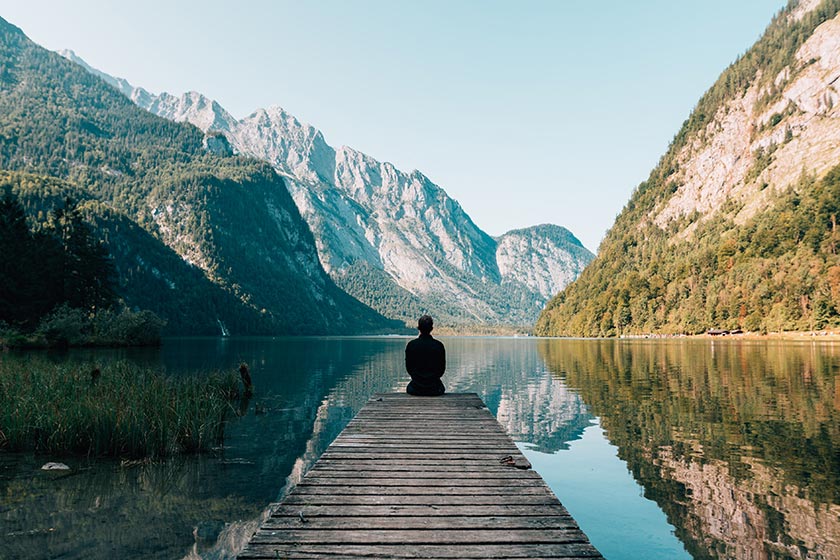Mindfulness techniques photographers can use to reduce stress and keep their creativity.
May 9th, 2022
To many people in other occupations, being a professional photographer might sound glamorous. But in reality, photographers face small business challenges like anyone else: client relations, deadlines, technical or equipment challenges, maintaining an online presence, marketing and finances…whew, it can all lead to extreme stress. The dream of being a photography entrepreneur can become a burden unless you care for your mental health.
Over the past two pandemic years, photographers have experienced added stress with empty schedules due to canceled events and precautionary steps that made typical studios seem more like a medical clinic. Just like any small business owner, it’s important to find methods of releasing the pressure and blowing off steam in healthy ways. That’s where “Mindfulness” can lead to less stress and more success.
Sparking creativity can lead to burnout.
Being creative can be fun, whether it’s trying a new lighting technique for portraits, crafting an interesting landscape composition, or capturing a magical wedding moment. But when you add the stress of finding new clients, maintaining cash flow, and keeping the bills paid, many photographers find themselves hitting their limit, which can lead to burnout. Any artist can tell you; it’s very difficult to create meaningful art when you are burnt out and emotionally spent.
Another often unspoken reality of being a small business entrepreneur is the fact that many photographers are in it alone. While some introverted photographers thrive on the limited social contact, extroverts feel this loss deeply. When the balancing act of being creative and running a business falls solely on your shoulders, the weight can really add up. Especially true for a one-person photography business, entrepreneurship and loneliness often accompany each other. When you are better equipped to recognize the signs of stress and loneliness and have the tools to combat them, you can more easily combat burnout.
Most importantly, know that you are not alone. This May, in honor of Mental Health Awareness Month, let’s take a look together at the stressful factors of running a full or part-time photography business and find ways to cope using mindfulness techniques. As we navigate this new awareness, we’ll cover the causes, impact, and ways to mitigate entrepreneur stress.
How small business challenges impact photographers.
Photographers are not immune to the aforementioned general pressures of business ownership: marketing, finances, customer service, scheduling, and a hundred other things. As a solo entrepreneur, the responsibility of getting all the business matters done sometimes takes a back seat to working a shooting session. That means late nights or other times spent on “office” tasks that might otherwise be time for rest.
If you have part or full-time employees, making payroll comes into play as a stress-maker. Studio space rent and insurance payments can pile on, too. These typical business obligations are mostly the same as other small enterprises. Where it becomes different for photographers is when session time rolls around.
Since your photographic and video art is your product, it becomes absolutely essential to put those other “menial” tasks aside and create. That’s when you take a deep breath and pack the gear bag for a remote shoot or set the studio for a great client experience. But sometimes taking a breath isn’t enough and the effects of stress manifest in other ways.
Some typical signs of burnout in photographers include:
- Productivity decline – you just don’t get as much done as you are usually capable of, or you book fewer sessions so as not to feel overwhelmed.
- Less creativity – the spark is gone or dimmed, and you find it difficult to feel inspired and create unique images.
- Perception of success – you get caught in the comparison game (thanks in part to social media) and worry about how you’re doing versus that other photographer who seems to be amazing.
- Change in personal relationships – this can go two ways: either you find you’ve become reclusive and withdrawn, or you’re out more than is normal for you, seeking a diversion from stress.
What is mindfulness anyway?
“Mindfulness” is a popular term these days in many circles. The formal definition is;
The quality or state of being conscious or aware of something – a mental state achieved by focusing one’s awareness on the present moment, while calmly acknowledging and accepting one’s feelings, thoughts, and bodily sensations, used as a therapeutic technique.
The operative word for mindfulness is “awareness.” The key to dealing with stress is first and foremost acknowledging your feelings and not denying or avoiding them. That seems obvious, right? Yet the ability to overtly make this determination is not in our nature. Mindfulness is typically not our default mode in everyday life. Most of us operate on auto-pilot, getting through the day and getting things done while generally unaware of what we are truly experiencing or how we are feeling.
A key to achieving a state of mindfulness is being “non-judgmental.” Being aware of how you feel doesn’t necessarily mean assigning blame to yourself or a situation, which can lead to a downward spiral of even worse feelings. It’s more of an exercise of acknowledging how you feel without judgment so you can deal with it healthfully.
According to Jon Kabat-Zinn, a well-known author and founder of the Stress Reduction Clinic at the University of Massachusetts,
“Mindfulness is awareness that arises through paying attention,
on purpose, in the present moment, and non-judgmentally.”
Mindfulness and acceptance of your feelings will help you be more present and gain some control over your reactions and thoughts. It helps you see situations more clearly and respond appropriately. Mindfulness can help your senses become more acute so you joyfully hear and smell things you might have otherwise missed. Beneficially for photographers, that could lead to you “seeing” things in new ways and finding new dimensions in your craft.
How to reduce and manage the stress of being a photographer.
It takes practice. Since being mindful is not our normal default state of being, a few practices can be applied to help you better care for yourself. A site published by the University of Minnesota for Taking Charge of Your Health & Wellbeing, cites three ways to develop mindfulness:
- Intention to cultivate awareness (and return to it again and again)
- Attention to what is occurring in the present moment (simply observing thoughts, feelings, sensations as they arise)
- Attitude that is non-judgmental, curious, and kind
Meditation, movement, even movies, can be practical ways to achieve mindfulness. Anything you do to increase feel-good endorphins and reduce the stress hormone cortisol will generally help you enter a happier state of mind. Let’s look at some proven practices to improve mindfulness:
- Practice self-care by identifying things that bring you joy, and then make time for them – rest, reading, time with friends, dancing, being outdoors, etc.
- Reflection / meditation
- Writing / journaling
- Peer groups – gather with photographers and other creatives to talk and support each other, especially helpful if you work solo.
- Movement – exercise / walking / boxing / yoga
If you don’t have a favorite routine already, practice this meditation and mindfulness routine along with Dennis, a photographer and certified yoga teacher we are fortunate to have on our Zenfolio Customer Success team.
You can seek to alleviate stress on the business side by employing technology and automated workflows to handle scheduling, selling, and processing. Move beyond the small business challenges and make it a goal this year to master the business instead of the business mastering you. This article on Growing Your Photography Business can help you get started!
It’s ironic that the leisurely pursuit of photography is often recommended as a method for relieving stress. So, how does that work for professional photographers? Remove the pressure of creating for profit and investigate a genre different from your profession. If you shoot portraits, get out in nature and try landscapes. If you spend your week with school events, look for abstract images. If you wrangle expensive gear all day, grab an instant-film camera and go have fun. Pick a new technique you’ve been interested to explore and give it a try – even if the images fail to meet your usual standards.
The most important thing is to get lost in observing the world around you and find joy in the process of creating again. This is photography solely for you; not for profit.
Whether you are shooting photography for fun, or for earning funds, being more mindful and making it a priority to care for yourself is the key to reducing stress and enjoying more success.




